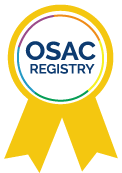Medicolegal Death Investigation Subcommittee

The Medicolegal Death Investigation Subcommittee focuses on standards and guidelines related to sudden, unnatural, unexplained or suspicious deaths, including homicides, suicides, unintentional fatal injuries, drug-related deaths and other deaths that are sudden or unexpected; determination of the cause and manner of death.
In October 2020, the Disaster Victim Identification (DVI) Subcommittee was moved under the Medicolegal Death Investigation Subcommittee as a formal Task Group (TG). The DVI TG will continue to advance the scientific basis for disaster victim identification and mass fatality management operations by assembling multi-disciplinary professionals to develop consensus standards, guidelines and best practices for use by medicolegal, public health and emergency management practitioners.
Officers | Members | Standards | Other Work Products
Officers
Kelly Keyes, Subcommittee Chair, RTI International
Shawn Wilson, Subcommittee Vice Chair, Hennepin County Medical Examiner's Office (DVI TG member)
Michelle Rippy, Subcommittee Executive Secretary, California State University East Bay
Tiffany Williams, DVI TG Executive Secretary, Orange County Sheriff-Coroner Department
Members
Sam Butikofer, Madison County Office of the Coronor
Jason Byrd, University of Florida/Maples Center for Forensic Medicine (DVI TG member)
Matthew Cain, University of New Mexico, Forensic Consulting LLC, Goodfellas Consulting LLC
Adam Covach, Fond du Lac County Medical Examiner's Office
Nicole Croom, University of Washington & King County Medical Examiner's Office
Daniel Dye, University of Alabama at Birmingham
Brian Ehret, Onondaga County Office of the Medical Examiner
Benjamin Figura, West Tennessee Regional Forensic Center (DVI TG member)
Jan Gorniak, Clark County Office of the Coroner/Medical Examiner
Katherine Grosso, Armed Forces Medical Examiner System
Amy Hawes, TN Office of the State Chief Medical Examiner
Gene Hernandez, Pima County Office of the Medical Examiner
Bryan Hoffman, NJ Office of the Chief State Medical Examiner
Julie Howe, Franklin, Jefferson and Saint Charles Counties Medical Examiner Offices
Bryan Johnson, Federal Bureau of Investigation (DVI TG member)
Michelle Jorden, County of Santa Clara Medical Examiner-Coroner
Laura Knight, Washoe County Regional Medical Examiner's Office
Sarah Lathrop, University of New Mexico
Katherine Maloney, Erie County Medical Examiner's Office
Daniel Morgan, National Transportation Safety Board (DVI TG member)
Naeem Ullah, New York City Office of Chief Medical Examiner (DVI TG member)
Victor Weedn, George Washington University, Department of Forensic Science (DVI TG member)
Jason Wiersema, Harris County Institute of Forensic Science (DVI TG member)
Medicolegal Death Investigation Affiliate List
Standards
On the OSAC Registry

- ANSI/ASB Best Practice Recommendation 007, Postmortem Impression Submission Strategy for Comprehensive Searches of Essential Automated Fingerprint Identification System Databases. 2018. 1st. Ed. (added September 5, 2019).
- ANSI/ASB Best Practice Recommendation 008, Mass Fatality Scene Processing: Best Practice Recommendations for the Medicolegal Authority. 2021. 1st. Ed. (added April 5, 2022).
- ANSI/ASB Best Practice Recommendation 009, Best Practice Recommendations for the Examination of Human Remains by Forensic Pathologists in the Disaster Victim Identification Context. 2019. 1st. Ed. (added September 7, 2021).
- ANSI/ASB Best Practice Recommendation 010, Forensic Anthropology in Disaster Victim Identification: Best Practice Recommendations for the Medicolegal Authority. 2018. 1st. Ed. (added September 5, 2019).
- ANSI/ASB Best Practice Recommendation 094, Postmortem Impression Recovery: Guidance and Best Practices for Disaster Victim Identification. 2021. 1st. Ed. (added April 5, 2022).
- ANSI/ASB Best Practice Recommendation 108, Forensic Odontology in Disaster Victim Identification: Best Practice Recommendations for the Medicolegal Authority. 2021. 1st. Ed. (added October 4, 2022).
- ANSI/ASB Standard 125, Organizational and Foundational Standard for Medicolegal Death Investigation. 2021. 1st. Ed. (added October 4, 2022).
- OSAC 2021-N-0007, Media Communications Following a Mass Fatality Incident: Best Practice Recommendations for the Medicolegal Authority (added August 3, 2021 and sent to ASB for further development and publication).
- OSAC 2021-N-0008, Victim Accounting: Best Practice Recommendations for Medicolegal Authorities in Mass Fatality Management (added August 3, 2021 and sent to ASB for further development and publication).
- OSAC 2022-N-0026, Medicolegal Death Investigation: Terms and Definitions (added September 6, 2022 and sent to ASB for further development and publication).
- OSAC 2022-N-0020, Standard for Mass Fatality Incident Management (added January 5, 2023 and sent to ASB for further development and publication).
- OSAC 2022-N-0021, Family Engagement Following a Mass Fatality Incident: Victim Information Center Best Practice Recommendations for Medicolegal Authority (added April 2, 2024 and sent to ASB for further development and publication).
- OSAC 2022-N-0027, Medicolegal Death Investigation Response to Death Locations and Incident Scenes: Best Practice Recommendations (added November 1, 2022 and sent to ASB for further development and publication.
- OSAC 2023-N-0004, Standard for Interactions Between Medical Examiner, Coroner and all Other Medicolegal Death Investigation Agencies and Organ and Tissue Procurement Organizations and Eye Banks (added March 7, 2023 and sent to ASB for further development and publication).
- OSAC 2023-N-0022, Best Practice Recommendation for Communicating with Next of Kin during Medicolegal Death Investigations (added September 5, 2023).
Published by an SDO & Eligible for the OSAC Registry
At an SDO for Further Development & Publication
- OSAC 2021-N-0007, Media Communications Following a Mass Fatality Incident: Best Practice Recommendations for the Medicolegal Authority (OSAC Proposed Standard on the Registry).
- OSAC 2021-N-0008, Victim Accounting: Best Practice Recommendations for Medicolegal Authorities in Mass Fatality Management (OSAC Proposed Standard on the Registry).
- OSAC 2022-N-0026, Medicolegal Death Investigation: Terms and Definitions (OSAC Proposed Standard on the Registry).
- OSAC 2022-N-0020, Standard for Mass Fatality Incident Management (OSAC Proposed Standard on the Registry).
- OSAC 2022-N-0027, Medicolegal Death Investigation Response to Death Locations and Incident Scenes: Best Practice Recommendations (OSAC Proposed Standard on the Registry).
- OSAC 2023-N-0004, Standard for Interactions Between Medical Examiner, Coroner and all Other Medicolegal Death Investigation Agencies and Organ and Tissue Procurement Organizations and Eye Banks (OSAC Proposed Standard on the Registry).
- REVISION to ANSI/ASB Best Practice Recommendation 006, Best Practice Recommendations for DNA Analysis for Human Identification in Mass Fatality Incidents. 20xx. 2nd. Ed.
- REVISION to ANSI/ASB Best Practice Recommendation 007, Postmortem Impression Submission Strategy for Comprehensive Searches of Essential Automated Fingerprint Identification System Databases. 20xx. 2nd. Ed.
Under Development
- OSAC 2022-S-0022, Standard for Disaster Victim Identification.
- REVISION to ANSI/ASB Best Practice Recommendation 009, Best Practice Recommendations for the Examination of Human Remains by Forensic Pathologists in the Disaster Victim Identification Context. 20xx. 2nd. Ed.
- Best Practice Recommendation for Assessment of a Decedent on Scene.
- Best Practice Recommendations for Common Data Elements.
- Best Practice Recommendation for Deaths in Custody.
- Best Practice Recommendations for Fatality Management During a Pandemic.
- Mass Fatality Incident Data Management: Best Practice Recommendations for the Medicolegal Authority.
- Ethical Considerations in Disaster Victim Identification.
- Workload Limitations for Medicolegal Death Investigators.
Other Work Products
Research & Development Needs
- See the research and development needs identified by the Medicolegal Death Investigation Subcommittee.
Reference Documents
- Medicolegal Death Investigation Data Commonly Collected and Exchanged
- Principles to Promote Research in Medicolegal Death Investigation
- OSAC Disaster Victim Identification Task Group Reference Document List
Discipline-Specific Bibliographies and Bibliographic References
These documents may contain information to help forensic scientists, judges, lawyers, researchers, and other readers better understand the nature, scope, and foundations of the individual disciplines as currently practiced. The identification of these documents does not represent an endorsement by OSAC or NIST. Only standards that are posted on the OSAC Registry and Technical Guidance documents, are endorsed by OSAC. The referenced documents may be subject to copyright. Note: Subcommittee position statements or responses to data collections by the subcommittee do not necessarily represent the position of OSAC or NIST.
- OSAC Medicolegal Death Investigation Subcommittee Recommendations for Medical Examiner/Coroner Drug-Related Death Investigations
- OSAC Medicolegal Death Investigation Subcommittee Strategy Statement for Medical Examiner/Coroner Drug-Related Death Investigations
- SWGMDI Death Investigation Systems and NAME, ABMDI, IACME Representation in States
- SWGMDI State Medical Examiner Survey
- SWGMDI Process Map - Basic Steps in Medicolegal Death Investigation
- SWGMDI Report Summary of Jurisdictional Survey
Accreditation, Certification, and Training:
- SWGMDI Comparison of NAME and the IAC&ME Accreditation Standards
- SWGMDI Minimal Educational Requirements for MDI System Personnel
- SWGMDI Certification of Medicolegal Death Investigation Personnel
- Public Commentary on Recommendations for Certification and Training of MDI Personnel
Endorsement of External Documents:
- SWGMDI Endorsement of CDC Sudden Unexplained Infant Death Training Materials
- SWGMDI Endorsement of NIJ Death Investigation - A Guide for the Scene Investigator
Autopsy:
- SWGMDI Medicolegal Autopsy Facility Data for the United States 2005
- SWGMDI Medicolegal Autopsy Facilities in the United States 2011
- SWGMDI Possible Study Models to Assess the Utility of Autopsy in Contentious Medicolegal Categories of Death
- Public Commentary on Possible Study Models to Assess the Utility of Autopsy in Contentious Medicolegal Categories of Death
- SWGMDI PRC 9 A Report and Recommendations for Regional Medicolegal Autopsy and Death Investigation Centers
Critical Stress Management:
- SWGMDI Principles for Critical Stress Management in MDI Settings
- Public Commentary on Principles for Critical Stress Management in MDI Settings - Critical Event Debriefing and Recommendations for Development
Supply of Forensic Pathologists:
- SWGMDI Increasing the Supply of Forensic Pathologists in the US
- NAME and CAP Response to the Draft Report on 'Increasing the Supply of Forensic Pathologists in the United States'
- Public Commentary on Increasing the Supply of Forensic Pathologists in the US
Organ and Tissue Procurement:
- SWGMDI Standards for Interactions Between Medical Examiner/Coroner Offices and Organ and Tissue Procurement Organizations and Eye Banks
- Public Commentary on Organ and Tissue Procurement Committee Standards and Best Practices for Interactions Between Medical Examiner/Coroner Offices and Organ and Tissue Procurement - Comments Jan 6 - May 12, 2015
- Public Commentary on Organ and Tissue Procurement Committee Standards and Best Practices for Interaction Between Medical Examiner/Coroner Offices and Organ and Tissue Procurement Organizations
- Public Commentary on Organ and Tissue Procurement Committee Standards and Best Practices for Interactions Between Medical Examiner/Coroner Offices and Organ and Tissue Procurement and Eye Banks - Comments December 2012 - February 2013
Media Relations:
- SWGMDI Guidelines for Media Relations - Dissemination of Public Information in Medicolegal Death Investigations
- Public Commentary on Guidelines for Media Relations - Comment Report
Medicolegal Death Investigation Centers:
- SWGMDI Status of Perceived Need for Regional Medicolegal Death Investigation Centers
- Public Commentary on Status of and Perceived Need for Regional Medicolegal Death Investigation Centers
- SWGMDI Regional Medicolegal Autopsy and Death Investigation Centers - Construction, Staffing, and Costs
Next of Kin:
- SWGMDI Principles for Communicating with Next of Kin During Medicolegal Death Investigations
- Public Commentary on Principles for Communicating with Next of Kin During Medicolegal Death Investigations
Workplace Locations:
- SWGMDI Workplace Locations of Board Certified Forensic Pathologists in the US Who Perform Medicolegal Autopsies
- Public Commentary on Workplace Locations of Board Certified Forensic Pathologists in the US Who Perform Medicolegal Autopsies
Research:
- SWGMDI Research in Forensic Pathology Medicolegal Death Investigation
- Public Commentary on Research in a Forensic Pathology/Medicolegal Death Investigation
Pathology Departments:

